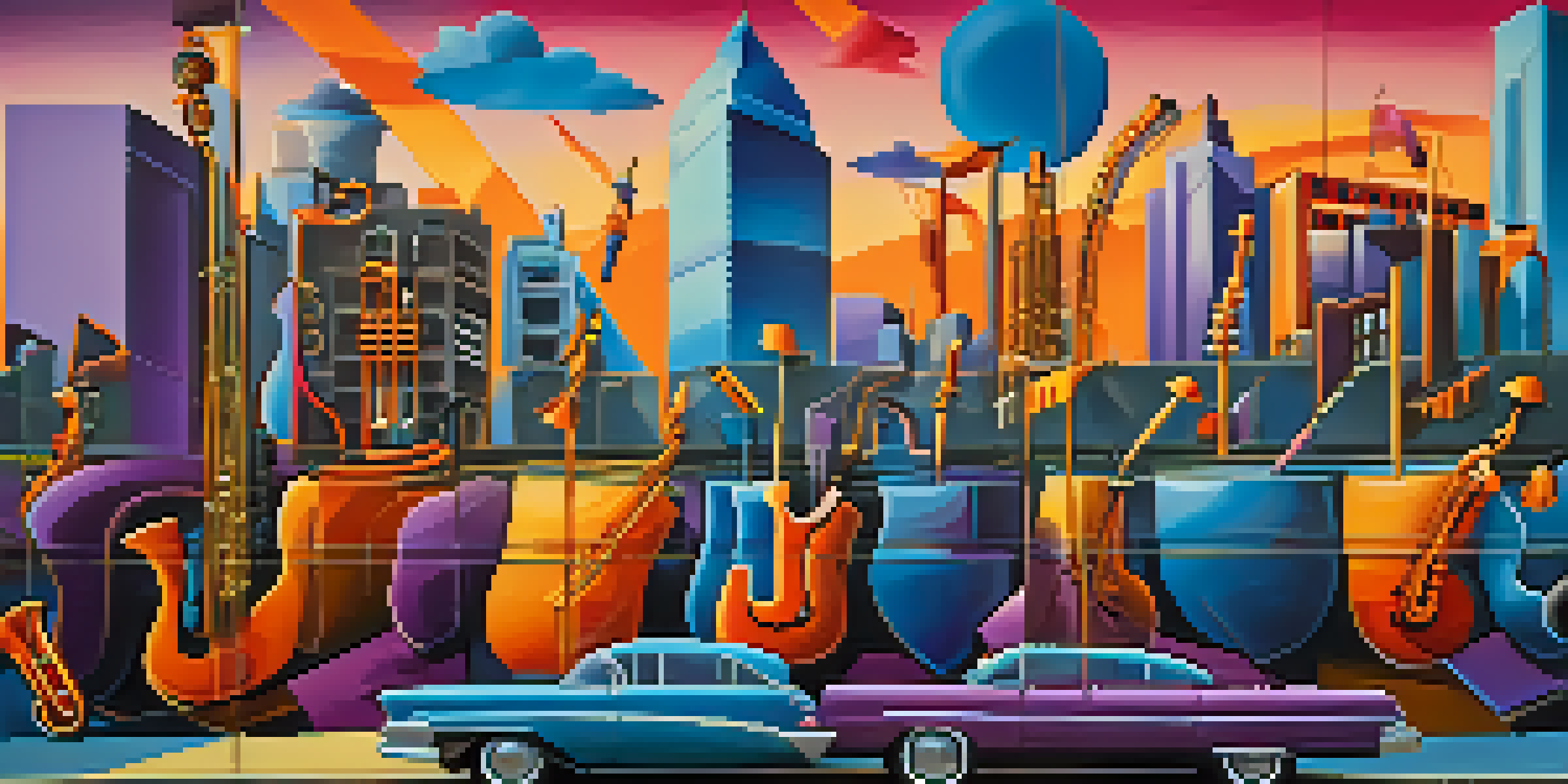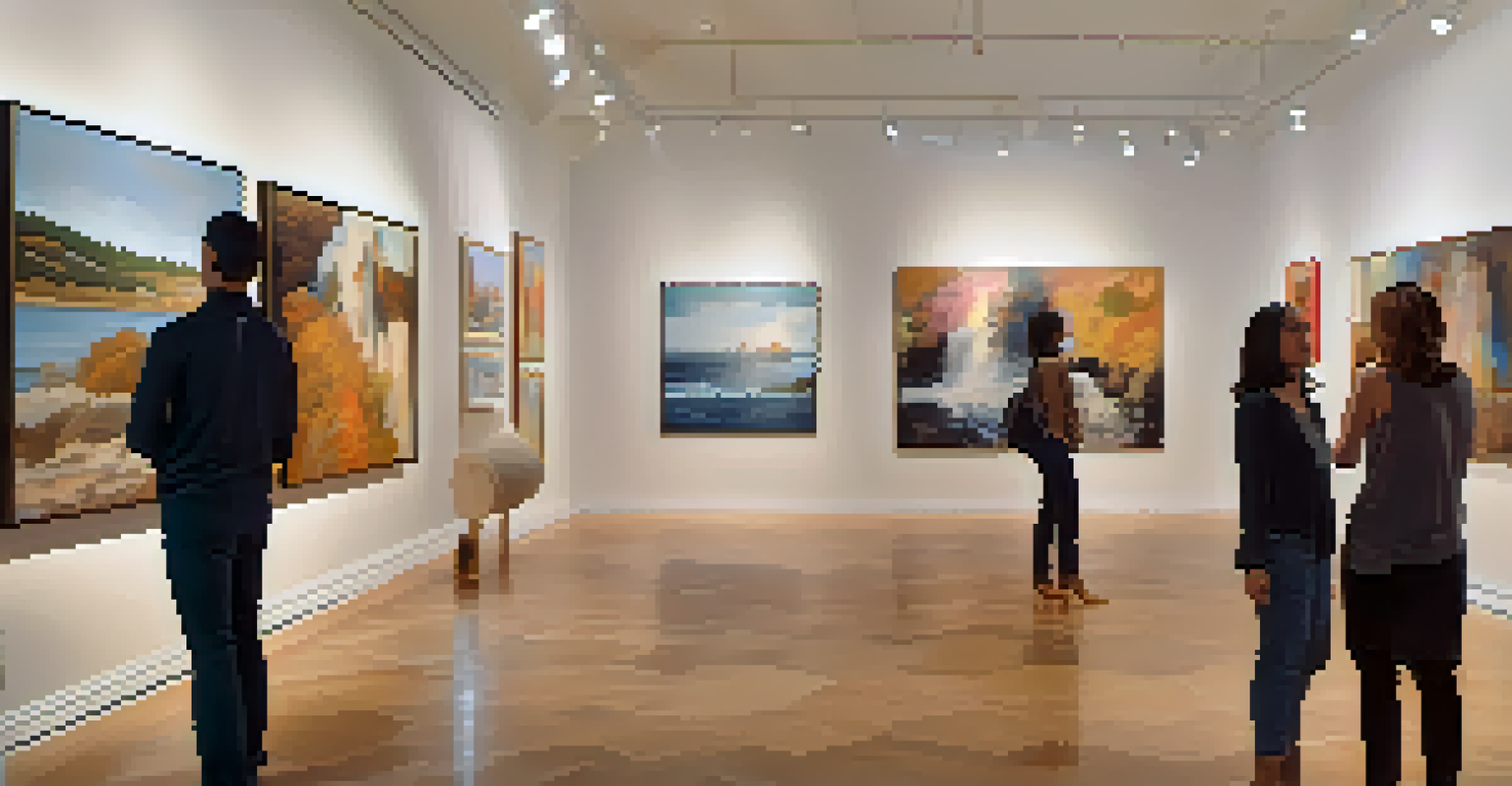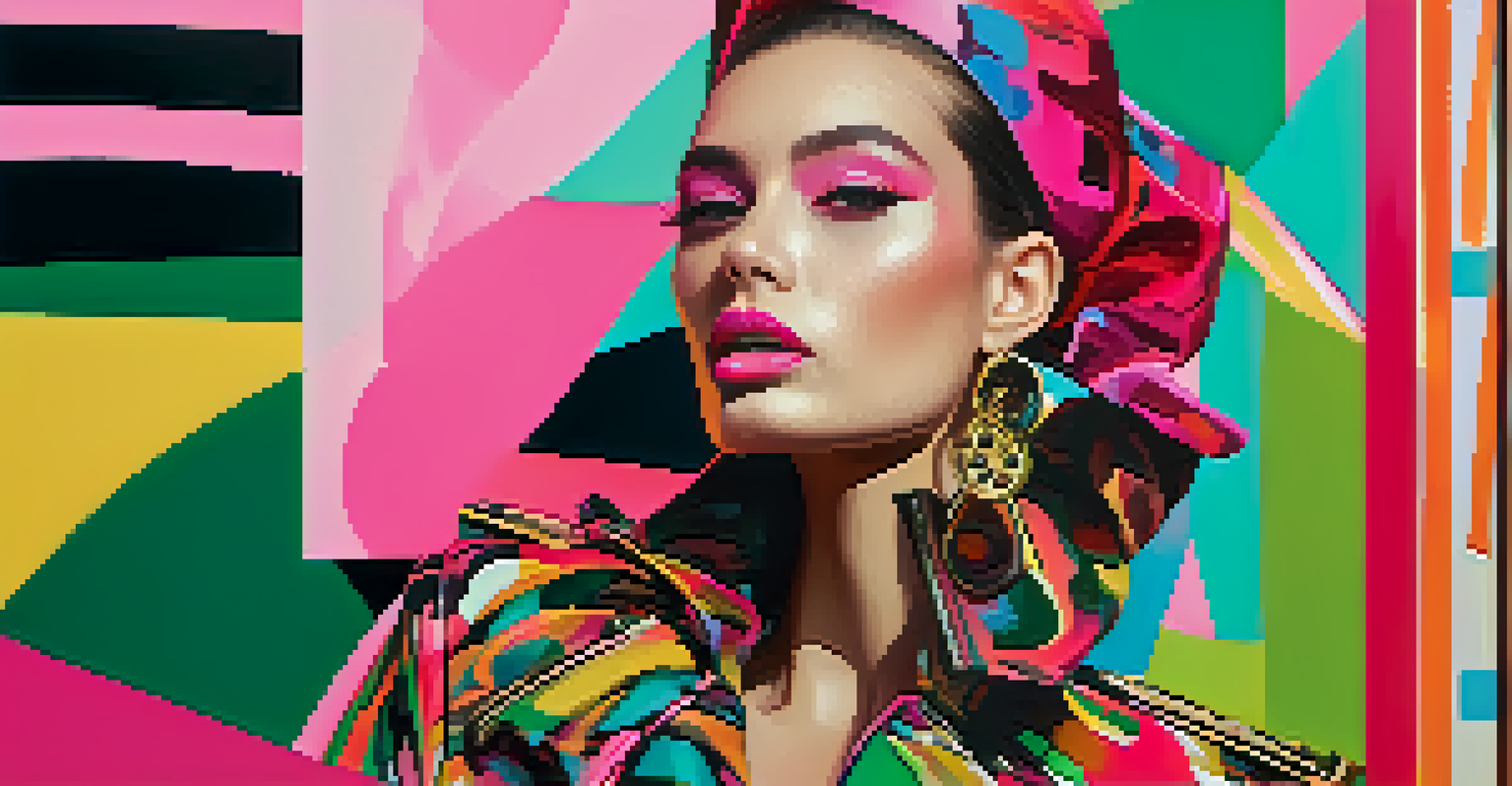The Influence of Pop Culture on Contemporary Painting Trends

Understanding Pop Culture's Definition and Scope
Pop culture, short for popular culture, encompasses the ideas, trends, and images that prevail in mainstream society at a given time. This can include music, movies, fashion, and more. It's a reflection of the collective consciousness of society, often driven by technology and social media.
Art is not what you see, but what you make others see.
In contemporary art, understanding pop culture means recognizing how it influences artists' choices and themes. For instance, a painter might draw inspiration from a viral meme, a hit song, or a blockbuster film. This connection makes the artwork relatable and engaging for the audience.
Furthermore, pop culture can serve as a bridge between high art and everyday life. By incorporating familiar references, artists invite viewers into their work, creating a dialogue that resonates with both art enthusiasts and casual observers.
The Rise of Street Art and Graffiti
Street art and graffiti have surged in popularity, transforming urban landscapes into vibrant galleries. Artists like Banksy and Shepard Fairey have gained international fame, illustrating how pop culture can elevate these often-misunderstood forms of expression. Their work often comments on social issues, making it both provocative and accessible.

This movement reflects a shift in contemporary painting, where traditional boundaries are blurred. Street artists often draw from popular media, using imagery from films, advertisements, and social commentary. This infusion of pop culture not only captures attention but also sparks conversations around important themes.
Pop Culture Shapes Artistic Expression
Contemporary artists draw inspiration from pop culture elements like music, fashion, and social media, making their work relatable and engaging.
Moreover, street art's accessibility allows it to reach diverse audiences. Unlike gallery exhibitions that may feel exclusive, street art invites everyone to engage with the artwork, fostering a sense of community and shared experience in dialogue about societal issues.
Influence of Music on Painting Styles
Music and painting share a deep-rooted connection, often influencing each other in various ways. Many contemporary artists draw inspiration from the sounds and emotions conveyed in music, leading to vibrant and dynamic artwork. For example, abstract expressionist artists like Jackson Pollock have spoken about how jazz music influenced their creative processes.
Every artist dips his brush in his own soul, and paints his own nature into his pictures.
Additionally, album covers have become a significant canvas for artistic expression. Iconic designs, such as those by Andy Warhol for The Velvet Underground, showcase how music and visual art intersect, creating a lasting impact on both industries. These collaborations often reflect the ethos of the music itself, enhancing the listener's experience.
Furthermore, live performances and the visual arts have merged, with artists creating paintings in real-time during concerts. This synergy not only entertains but also creates a unique art piece that embodies the energy of the music, demonstrating how intertwined these two forms of expression truly are.
Fashion's Role in Contemporary Art
Fashion has a profound impact on contemporary painting trends, often serving as a source of inspiration for artists. Designers frequently collaborate with visual artists, merging their creative visions to produce striking works that appeal to broader audiences. These collaborations can lead to innovative pieces that challenge traditional perceptions of both art and fashion.
For instance, artists like Yayoi Kusama have collaborated with brands like Louis Vuitton, seamlessly blending wearable art with high fashion. This cross-pollination not only elevates the artist's profile but also integrates art into everyday life, making it more accessible to the public.
Street Art Brings Community Engagement
The rise of street art has transformed urban spaces into accessible galleries, encouraging dialogue about societal issues among diverse audiences.
Moreover, fashion trends often reflect cultural shifts, which artists can capture in their work. By incorporating elements of fashion into their paintings, artists comment on societal norms and values, creating a dialogue that resonates with viewers on multiple levels.
The Impact of Social Media on Art Trends
Social media has revolutionized the way art is consumed and appreciated. Platforms like Instagram and TikTok have become vital for artists to showcase their work, allowing them to reach global audiences instantly. This democratization of art means that contemporary painters often draw on trends propagated through these platforms.
Artists can gain instant feedback and validation from their followers, leading to a more interactive creative process. This real-time engagement often influences the themes and styles they choose to explore, making their work more reflective of current societal interests and trends.
Additionally, social media has fostered a culture of virality, where certain styles or subjects can explode in popularity overnight. This phenomenon encourages artists to adapt and experiment, leading to fresh, innovative approaches that keep contemporary painting vibrant and relevant.
Exploring Humor and Satire in Modern Art
Humor and satire have emerged as powerful tools in contemporary painting, often influenced by pop culture. Artists use wit to comment on society, politics, and cultural norms, making their work both entertaining and thought-provoking. This approach resonates with audiences who appreciate art that challenges the status quo while evoking laughter.
For example, artists like Jeff Koons and Takashi Murakami incorporate playful imagery and references that engage viewers on a lighter level. Their work often blurs the lines between high art and commercialism, reflecting pop culture's influence on artistic expression.
Diversity Enhances Art's Landscape
A growing focus on representation in contemporary painting allows artists from various backgrounds to share their unique stories, enriching the art world.
Moreover, humor can serve as a coping mechanism, allowing artists to address serious issues in a more digestible way. By incorporating satire into their paintings, they invite viewers to reflect on complex subjects while enjoying the visual experience, creating a unique blend of humor and insight.
Diversity and Representation in Contemporary Art
Pop culture has played a significant role in promoting diversity and representation within contemporary painting. As societal awareness grows, artists from various backgrounds are using their platforms to tell stories that reflect their experiences. This shift leads to a richer and more varied artistic landscape, appealing to a broader audience.
Many contemporary artists are deliberately addressing themes of identity, race, and gender in their work, influenced by broader cultural conversations. This has encouraged a new generation of artists to explore their unique perspectives, challenging traditional narratives and expanding the art world's horizons.

Furthermore, this focus on representation fosters inclusivity, allowing more people to see themselves in art. When diverse voices are celebrated, it transforms the art scene, creating a dynamic environment where various influences, styles, and stories coexist and thrive.
The Future of Painting in a Pop Culture Context
As pop culture continues to evolve, so too will contemporary painting trends. Artists are likely to draw on emerging technologies, such as virtual reality and augmented reality, to create immersive experiences that blend the digital and physical realms. This integration promises to redefine the boundaries of art and challenge our perceptions.
Moreover, the influence of global pop culture will become increasingly significant, as artists from diverse backgrounds share their unique perspectives. This exchange of ideas and styles will foster a more interconnected art world, enriching the creative landscape for everyone involved.
Ultimately, the future of painting will likely reflect the dynamic and ever-changing nature of society itself. By embracing pop culture's influence, artists can continue to produce work that resonates deeply with audiences, ensuring that contemporary painting remains relevant and engaging in an increasingly complex world.